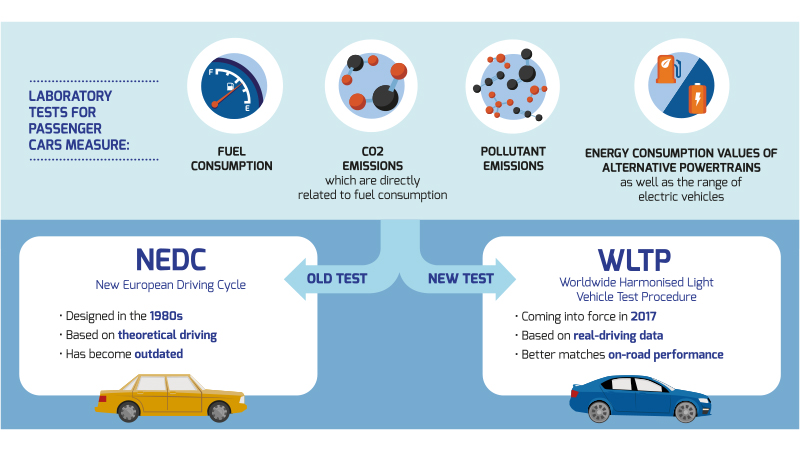We use cookies to make your experience better. To comply with the new e-Privacy directive, we need to ask for your consent to set the cookies. Learn more.


What is WLTP?

What's changed?
Even though the new tests will still take place in a laboratory, the techniques used have been adapted to better reflect the on-road performance of a car. The procedure has been created based on real-driving data rather than on theoretical scenarios as before. Therefore, the fuel consumption and emissions figures produced by the WLTP will be far more accurate than they have been to date. In order to test more realistic driving behaviour the test includes: • Higher average and maximum speeds • A greater range of driving situations (urban, suburban, motorway) • Longer test distances • More representative accelerations and decelerations • Shorter stops • More realistic ambient temperatures – closer to the European averageWhen does it come into effect?
The legislation has already been in place for all new models released since September 2017. WLTP certification will then become compulsory on all models, regardless of how long they have been on the market, from September this year. Until that point there will be both NEDC and WLTP values in circulation, meaning that comparing models in this way may be difficult for consumers.In future, when choosing their optional extras, customers will be able to calculate the CO2 emissions of their vehicle model more accurately than before. To ensure clarity and maximum possible transparency, Mercedes-Benz will actively follow the introduction phases of the WLTP and provide dealers and customers with targeted information.
What about the RDE test?
What does this mean for me?
Although it will not change a car’s real fuel consumption performance, the more rigorous testing of WLTP will result in higher CO2 values (and therefore fuel consumption figures) compared to the NEDC test. Because UK vehicle taxation laws are based on a vehicle’s CO2 emissions, consumers should expect changes to how vehicle tax is calculated for all vehicles. The current taxation systems for Vehicle Excise Duty (VED) and Benefit in Kind (BiK) will remain in use until a complete overhaul takes place to solely reflect WLTP values. This is currently anticipated to be in April 2020. To ensure the taxation system is fair in this transitionary period, new models that have been issued with a WLTP value will also have a back-calculated NEDC value. It is this NEDC value that is used to assign a tax band. Nevertheless, experts suggest that the move to WLTP should not increase costs for customers because there hasn't been a change to the vehicle’s consumption in the real world. However, we are yet to receive confirmation on exactly what the new system will look like;“The move to the new WLTP test should not negatively impact vehicle taxation by increasing costs for the consumers. After all, the vehicle’s performance is not affected by the transition to Worldwide Harmonised Light Vehicle Test Procedure. However, WLTP will result in a higher g/km CO2 value for a specific vehicle compared to NEDC, simply because it is more rigorous than the old test.” – WLTP Facts

